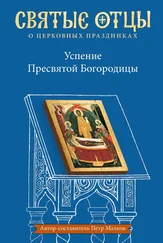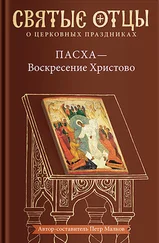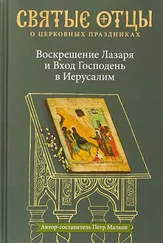Bourdieu, Pierre (1990): Fa domination masculine. Actes de la recherche en science sociales 84 (mascuhn/feminin 2): 2—31. Dt. Ubersetzung in I. Dolling und B. Krais (Hrsg.). Ein alltagliches Spiel. Geschlechterkonstruktion in der sozialen Praxis. – Frankfurt: Suhrkamp. – S. 153–218.
Bradley, Patricia H. (1981): The Folk-Finguistics of Women’s Speech: An Empirical Examination. In: Communication Monographs 48. – P. 73–90.
Branner, Rebecca (2001): Scherzkommunikation unter Madchen. Dissertation. – Technische Universitat Darmstadt.
Braun, Friederike (1996): Das groBe I und seine Schwestem– eine kritische Bewertung. Der Deutschunterricht 1. – S. 54–63.
Brend, Ruth (1975): Male-female intonation patterns in American English. In: Barrie Thome, Nancy Henley (eds.). Fanguage and Sex: Difference and Dominance. – Rowley, Mass.: Newbury House. – P. 84–88.
Brouwer, Dede (1986): Gender-specific attitudes towards Amsterdam vernacular. In: Roeland van Hout, Uus Knops, Yves Persoons (eds.): Fanguage attitudes in the Dutch language area. – Dordrecht: Foris.
Brown, Penelope; Fevinson, Stephen (1987): Politeness. Some Universals in Fanguage Usage. – Cambridge: Cambridge University Press.
Brunner, Margot; Frank-Cyrus, Karin M. (1998): Die Frau in der Sprache. Gespräche zum geschlechtergerechten Sprachgebrauch. – Wiesbaden: Gesellschaft flir deutsche Sprache.
Buchen, Sylvia; Philipper, Ingeborg (2002): Die Bedeutung neuer Medien im Feben mannlicher und weiblicher Jugendlicher unterschiedlicher Schulformen. Medien-Padagogik. Onhne-Zeitschrift flir Theorie und Praxis der Medienbildung (erscheint).
Bucholtz, Mary et. al. (eds.) (1999): Reinventing Identities: The Gendered Self in Discourse. – Oxford: Oxford University Press.
Burckhard, Armin (1992): «Das ist eine Frage des Intellekts, Frau Kollegin!» Zur Behandlung von Rednerinnen in deutschen Parlamenten. In: Susanne
Gtinthner, Helga Kotthoff (eds.). Die Geschlechter im Gespräch. Kommunikation in Institutionen. – Stuttgart: Metzler.
Bussmann, Hadumod; Hof, Renate (Hrsg.) (1995): Genus. Zur Geschlechter-differenz in den Kulturwissenschaften. – Stuttgart: Metzler.
Butler, Judith (1989): Gender Trouble. Feminism and the Subversion of Identity. – New York: Routledge.
Butler, Judith (1993): Bodies that Matter. On the Discoursive Limits of Identity. – New York: Routledge.
Butler, Judith (2002): Performative Akte und Geschlechterkonstitution. Phanomenologie und feministische Theorie. In: Uwe Wirth (Hrsg.). Performanz. – Frankfurt: Suhrkamp. – S. 301–320.
Cahill, Spencer (1986): Childhood Socialization as a Recruitment Process. In: Sociological Studies of Child Development 1. – P. 163–186.
Cameron, Deborah (1997): Theoretical Debates in Feminist Linguistics: Questions of Sex and Gender. In: Ruth Wodak (ed.). Gender and Discourse. – London: Sage. – P. 21–37.
Cameron, Deborah (1998): The Feminist Critique of Language. A Reader. – London; New York: Routledge.
Case, Susan S. (1985): A sociolinguistic analysis of the language of gender relations, deviance and influence in managerial groups. PhD dissertation. – State University of New York at Buffalo.
Case, Susan S. (1988): Cultural differences, not deficiencies: an analysis of managerial women’s language. In: Laurie Larwood and Suzanne Rose (eds.). Women’s Careers: Pathways and Pitfalls. – New York: Praeger.
Cheshire, Jenny (1982): Variation in an English Dialect. – Cambridge: Cambridge University Press.
Coates, Jennifer (1986). Women, men and language. – London; New York: Longman.
Coates, Jennifer (1996): Women talk: Conversation between women friends. – Oxford: Blackwell.
Coates, Jennifer (eds.) (1998): Language and Gender. A Reader. – London: Blackwell.
Condry, S., Condry, J. (1976): Sex Differences: A study of the Eye of the Beholder. In: Child Development 47. – P. 812–819.
Connell, Robert W. (1995): Masculinities. – Cambridge, Polity Press.
Coser, Rose L. (1960): Laughter among colleagues. In: Psychiatry 23. – P. 81–95.
Couper-Kuhlen, Elisabeth (1986): An Introduction to English Prosody. – Tubingen, Niemeyer.
Crawford, Mary (1995): Talking Difference. On Gender and Language. – London: Sage.
Davies, Catherine E. (2003): Gendered Sense of Humor as Expressed Through Aesthetic Typifications. In: Journal of Pragmatics (to appear).
Davies, J. (1999): Expressions of Gender. PhD thesis. – University of Sheffield.
Davies, J. (2003): Expressions of Gender: An Analysis of Pupils’ Gendered Discourse Styles in Small Group Classroom Discussion. Discourse & Society (to appear).
Deppermann, Amulf; Schmidt, Axel (2001a): Hauptsache SpaB – Zur Eigenart der Unterhaltungskultur Jugendlicher. In: Der Deutschunterricht 6. – S. 27–38.
Deppermann, Amulf; Schmidt, Axel (2001b): ‘Dissen’: Eine interaktive Praktik zur Verhandlung von Charakter und Status in Peer-Groups mannlicher Jugendlicher. In: Osnabriicker Beitrage zur Sprachtheorie 62. – S. 79–98.
Dubois, Betty Lou; Crouch, Isabel (1975): The question of tag questions in women’s speech: They don’t really use more of them, do they? In: Language in Society, 4. – P.2 89—294.
Dundes, Alan; Leach, Jerry W.; Ozkok, Bora (1972): The Strategy of Turkish Boys’ Verbal Dueling Rhymes. In: John Gumperz, Dell Hymes (eds.). Directions in Sociolinguistics. – New York: Holt, Rinehart and Winston.
Dweck, Carol S. et al. (1978): Sex differences in learned helplessness. The contingencies of evaluative feedback in the classroom. An experimental analysis. In: Developmental Psychology 14. – P. 268—276
Eckert, Penelope; McConnell-Ginet, Sally (1992): Think practically and look locally: language and gender as community based practice. In: Annual Review of Anthropology 21. – P. 461–490.
Eckert, Penelope; McConnell-Ginet, Sally (2000): Linguistic Variation as Social Practice. – London; New York: Blackwell.
Edelsky, Carole (1984): Zwei unterschiedliche Weisen, das Wort zu haben. In: In Senta Trömel-Plötz (eds.), Gewalt durch Sprache. – Frankfurt: Fischer.
Eder, Donna (1993): «Go get ya a French!»: Romantic and Sexual Teasing among Adolescent Girls. In: Deborah Tannen (eds.). Gender and Conversational Interaction. – New York; Oxford: Oxford University Press. – P. 17–30.
Elyan, O.; Smith, P.; Giles, H.; Bourhis, R. (1978): RP-Accented female speech: The voice of perceived androgyny? In: Trudgill, Peter (eds.), Sociolinguistic patterns in British English. – London: E. Arnold.
Ervin-Tripp, Susan (1976): Is Sybil There? The Structure of Some American Directives. In: Language in Society 5. – P. 25–67.
Ervin-Tripp, Susan; Lampert, Martin D. (1992): Gender Differences in the Construction of Humorous Talk. In: Юга Hall, Mary Bucholtz, Birch Moonwomon (eds.). Locating Power. – Berkeley: Berkeley Women and Language Group, University of California. – P. 105–117.
Feagin, Crawford (1980): A woman’s place in nonstandard southern white English: Not so simple. In: Roger W. Shuy, A. Shukal (eds.). Language use and the uses of Language. – Washington: Georgetown University Press.
Fenstermaker, Sarah; West, Candance (1995): Doing Difference. In: Gender & Society 1. – P. 8—37.
Fishman, Pamela (1983): Interaction: the work women do. In: Barrie Thorne, Cheris Kramarae, Nancy Henley (eds.). Language, gender, and society. – Rowley, Mass.: Newbury House.
Fine, Gary A. (1990): With the Boys. Little League Baseball and Preadolescent Culture. – Chicago, University of Chicago Press.
Frank, Karsta (1992): Sprachgewalt: Die sprachliche Reproduktion der Geschlechterhierarchie. – Tubingen: Niemeyer.
Frasch, Heidi; Wagner, Angelika (1982): Auf Jungen achtet man einfach mehr. In: Ilse Brehmer (Hrsg.): Sexismus in der Schule. – Weinheim; Basel: Beltz.
Читать дальше
Конец ознакомительного отрывка
Купить книгу












